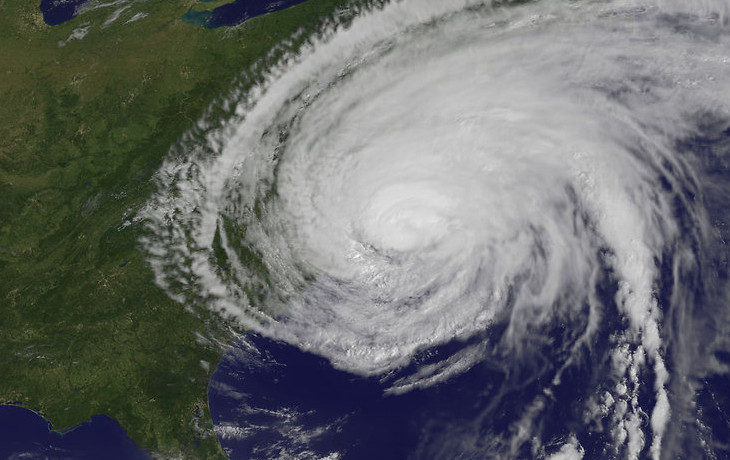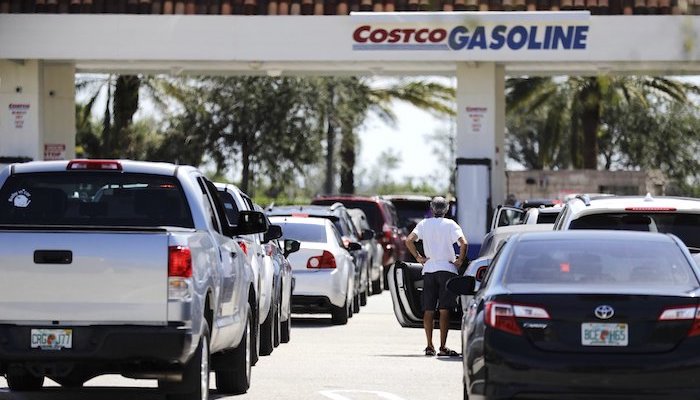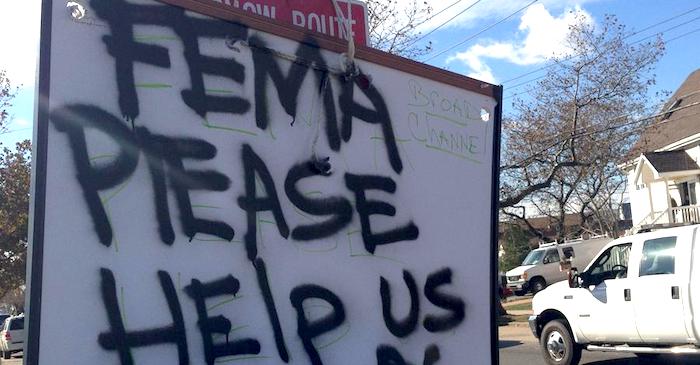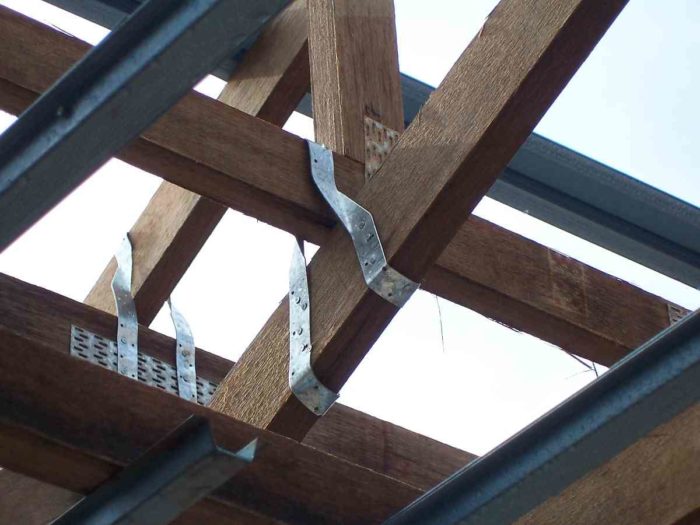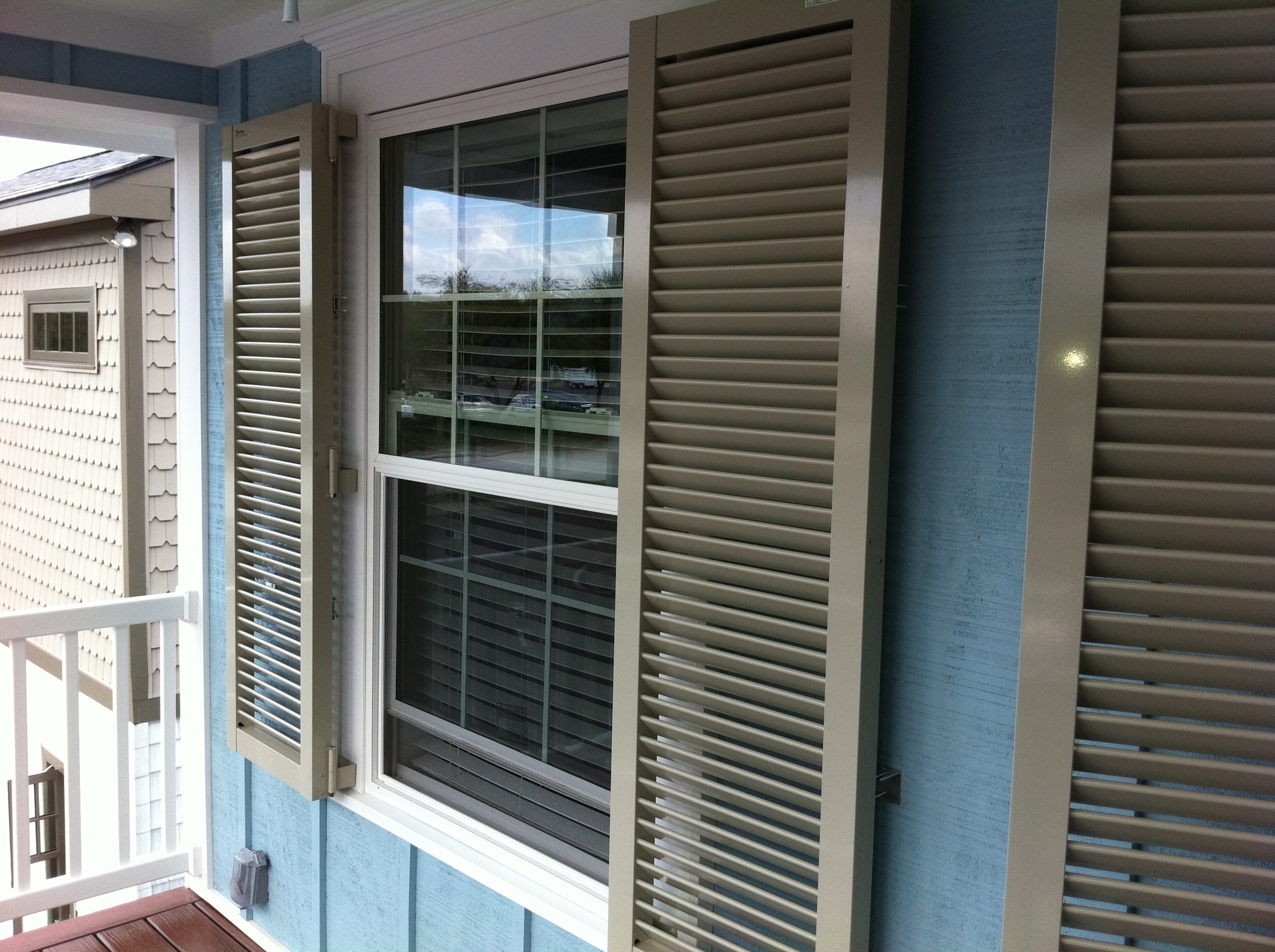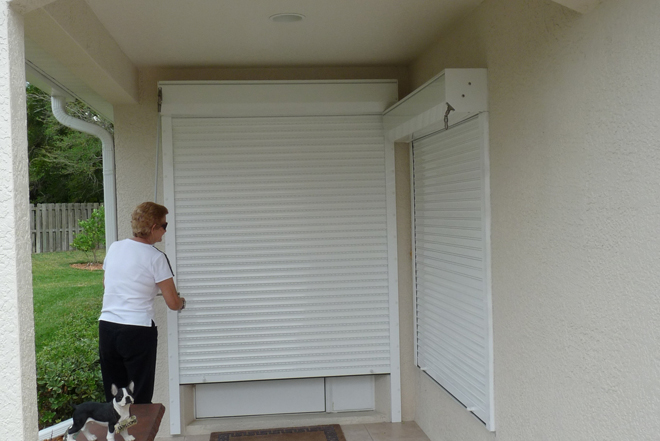There aren’t many meteorological maelstroms as daunting as hurricanes. They can soak you, flood you, and blow the roof off your home, if they don’t flatten it altogether. The 2017 hurricanes Harvey, Irma, and Maria renewed our awareness of their supreme power — and just how unprepared many families and governments really are.
Unfortunately, many people wait until it’s too late to properly prepare. They choose to be victims. They choose to spend tens of thousands of dollars later instead of hundreds of dollars now. They assume that FEMA, the Red Cross, or another group will bail them out — even though we know that those groups take days, weeks, or even longer to help.
In the North Atlantic, hurricane season lasts from June through November, with peak activity between August and October.
The silver lining in hurricanes is that we can predict their season and when specific storms are coming.
The best thing to do is prepare ahead of time. You will save time and money, and prevent possible injury, death, or major life disruption (like losing your home) by preparing for hurricanes well before they start.
Following this guide will prepare you for comfortable survival, lower your risk of major home damage, save you time and money, and even make last-minute preparations in case a storm is a few days away.
- Why you should trust us
- How to prepare for a hurricane that is days away
- How to prepare hours before a hurricane hits
- How to survive the hurricane
- Hurricane risks and situations
- Basic foundation checklist for any situation
- Great hurricane-specific emergency gear
- Storing hurricane supplies
- How to prepare your home ahead of time
- Window shutters
- Hurricane insurance
- Financial incentives and tax holidays
- What to do after the storm
Why you should trust us
We spent over 45 hours researching best practices for hurricane preparation, including what to do before, during, and after a storm.
We sourced emergency management professionals on federal, state and local levels. We spoke to a marine biologist, large hardware retailer, and recent hurricane survivors. We reviewed fresh data, official reports, and lessons learned from the 2017 hurricane season.
The author volunteered in cleanup efforts in New Orleans’ Lower Ninth Ward in March 2006 following Hurricane Katrina, giving him first-hand experience with hurricane damage, and has a family member who worked for FEMA in New Orleans and southern Mississippi after the storm.
How to prepare for hurricanes that are days away
In case you Googled this as a storm is headed your way, we wanted to give the best last-minute tips right up front. We assume you’re basically unprepared and don’t have any of the proper prepping basics.
What you do will depend on how much time you have left. Forecasters are pretty accurate with their time estimates, but are less accurate with guessing the storm’s path. You can also use official hurricane watches and warnings as a time-guide. According to the National Hurricane Center:
- Hurricane watches are issued 48 hours before tropical-storm-force winds start blowing.
- Hurricane warnings are more serious, issued 36 hours before the heavy winds.
As soon as you are motivated to prepare (which can never be too soon), make sure you have your human survival needs covered.
The #1 goal is to be able to survive in your home, with no outside help or grid, for two weeks:
- Fifteen gallons per person of potable drinking water in proper storage containers. Do not depend on filling up your bathtub or tapping into your water heater.
- Two weeks of food that doesn’t depend on the grid. Which means no refrigerator, utility cooking gas, etc. Get food like peanut butter, protein bars, dried fruit, beef jerky, or meals that only need hot water to cook.
- Plan on the grid being down. Have light sources like candles and headlamps or flashlights.
- Have a way to communicate with (or at least listen to) the outside world with a battery- or crank-powered radio.
- Have a medical kit. Pay attention to special medications you might need.
- If you have children or pets, make sure you have enough food and diapers.
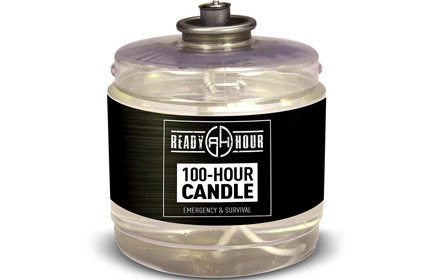
Ready Hour 100-Hour Candle
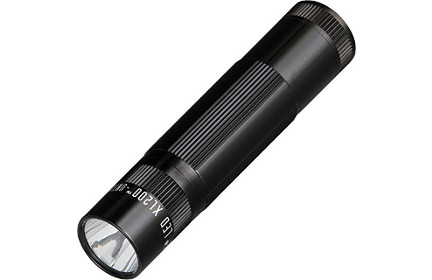
Maglite XL200 LED Flashlight
If the storm is less than two days away — which means you likely can’t order everything online — hit your local stores. Everyone rushes to the store before a storm, but if you have to go, it’s better than having nothing.
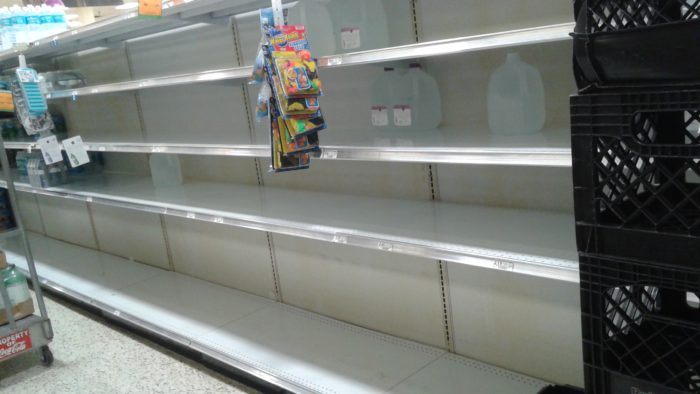
Tip: People don’t think straight in a panic, so be creative in stores. We’ve heard stories where all of the normal water was gone, but sparkling water and tonic water in the liquor aisle were untouched. Or factory sliced bread was gone, but everyone ignored the artisan bread rolls near the deli.
Once you’ve got those basic two-week human survival needs covered, depending on how much time you have:
- Talk about storm plans with your family and an out-of-area contact.
- Reduce the stuff around your property and house that will be turned into dangerous shrapnel in high winds. For example, bring patio furniture and lawn tools inside.
- If you want to do last-minute plywood shutters, see the window section below.
- If possible, learn where your local evacuation shelters are and print out directions to get there. Or download directions in Google Maps “offline mode.”
- Think about internal flooding. Elevate important things as far away from the ground floor as safely possible. Put valuables in dry sacks or Ziploc bags.
- If you have a generator, get it ready. There’s a tricky balance between keeping it in a well-ventilated place, but not somewhere exposed to wind and flooding.
- Dust off tools like an axe or chainsaw. They can come in handy during the storm (you might need to bust through a wall or roof to escape) and after the storm (removing fallen trees).
- Have the right wrench or tool (and know how to use them) to turn off any utility, like gas, water, and electric.
- If you’re in the expected landfall path of a Category 3 or higher storm, consider either evacuating early or packing up the car in anticipation of leaving.
- Fill your cars with gas. If you can, fill up an extra fuel can or two. Fuel shortages after the storm are common.
How to prepare hours before a hurricane hits
When a hurricane is 1-12 hours away, weather forecasts will be pretty accurate. Assume it’s true if officials are saying you’re going to be hit.
- This assumes you’ve done the “1-2 days before” steps, like filling up gas and storing two weeks of potable water.
- Keep in mind that heavy rains and storm surges can start 6 hours before the storm officially makes landfall.
- Keep the radio or TV on so you’ll be the first to know if an evacuation order comes in or conditions change.
- Unless you’re dead-set on staying, prepare to evacuate if local officials seem to be leaning in that direction. Assuming it’s in a safe space like a garage, pack up the car and get the cash out of Grandma’s mattress.
- Park vehicles in a garage or next to a solid building. Avoid parking near trees, utility poles, fences, etc.
- Communicate your plans with an out-of-area contact, like a relative. Who’s with you, if you’re planning on staying or leaving, etc. A quick note can prevent a lot of anxiety among your loved ones later on.
- Fill your bathtubs. This bonus water can be used for sanitation. If you don’t have any properly stored potable water, then definitely fill up any bathtubs and spare jugs.
- Every adult should have a flashlight or headlamp in their pocket.
- Don’t use candles. Open flames are bad before/during a storm, but great after.
- Unplug electrical things that don’t need to be plugged in.
- Turn your fridge to the coldest settings. Food can stay safe for up to two days after the power has gone out if the fridge is super cold.
- Fill your fridge with things that freeze. Densely packed items like frozen bottles of water or meat packs can help keep the internal temperature cold in case the power goes. Fill liquid bottles less than 90% to allow for ice expansion.
- Keep your floors clear. If the power goes out, you don’t want to trip over your stuff.
- Cover your air conditioning unit with secured tarp or plywood structure (and then stop running the AC).
- Prepare any garage door braces, storm shutters, etc. you may already have.
If you evacuate, consider doing these first:
- Shut off your water and electricity.
- Most gas utilities recommend leaving your gas on when there isn’t yet a specific problem. If you choose to turn off your gas, do it at the base of your appliance (stove, water heater).
- Lock your doors.
- Close garage doors, and lock or brace them.
Understanding mandatory vs. voluntary evacuations
Have sympathy for your local officials — telling millions of people to get in their cars and flee a metro area is an expensive, messy decision. Tell people to leave when they didn’t need to, and they’ll get angry. Wait until it’s too late, and New Orleans during Katrina happens.
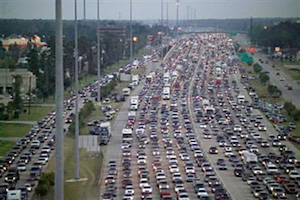
Cities calculate “clearance times,” which is how long it takes to clear an area. Combined with the storm’s strength and likelihood of a storm surge, all these factors play into the decision.
Officials will issue a voluntary evacuation when they think it’s likely a mandatory evacuation will follow, and they want to give you the heads up to leave before traffic jams up or the roads flood.
When authorities issue mandatory evacuation orders, no one forces you to leave your home. But no one will be around to help you when SHTF. Don’t choose to stay behind and then get mad that you were alone.
Local authorities might also issue curfews due to debris, water, and limited services. Typically they’re dusk until dawn, when you could be fined or arrested.
If you live in a mobile home, assume you will evacuate.
Be prepared. Don’t be a victim.
Want more great content and giveaways? Sign up for The Prepared’s free newsletter and get the best prepping content straight to your inbox. 1-2 emails a month, 0% spam.
How to survive the hurricane
Unfortunately, we can’t all hide in our wine cellar like Richard Branson did on his tropical island during Hurricane Irma.
- Even if you already have your home supplies organized and/or the car is packed, pay special attention to keeping your bug out bag nearby. If you have to run away quickly, like if the house blows over, your BOB is the one thing you should grab.
- Stay on the bottom floor unless water is rising.
- Keep away from windows, glass doors, and skylights.
- Try to surround yourself with strong walls and/or multiple walls that can shield you from shrapnel.
- Don’t take a bath or shower, you can get electrocuted.
- If you expect flooding or see it approaching, kill your electricity at the main breaker before water gets in — this can reduce the risk of electrocution.
- Don’t go outside in the eye of the storm. It’s tempting, but the back wall can come up suddenly, taking winds from 0 to 200 mph in a flash.
Hurricane risks and situations
The more you understand a threat and what it will be like, the better you can prepare and react.
Wind and rain
Hurricane categories are based on sustained wind speeds — which means consistent wind speed, not temporary spikes. Even though a Category 5 could have 160 mph sustained winds, wind spikes have reached 215 mph.
Saffir-Simpson Hurricane Wind Scale
| Category | Sustained wind | Damage summary |
|---|---|---|
| 1 | 74-95 mph (64-82 kt) | Very dangerous winds. Expect power outages. |
| 2 | 96-110 mph (83-95 kt) | Extremely dangerous winds. Near-total power loss could last days to weeks. Potable water could become scarce. |
| 3 | 111-129 mph (96-112 kt) | Devastating winds. Power and water unavailable for days to weeks after storm. |
| 4 | 130-156 mph (113-136 kt) | Catastrophic winds. Power and water loss for weeks. Area could be uninhabitable. |
| 5 | 157 mph or higher (137 kt or higher) | Catastrophic winds. Long-term utility loss. Could be uninhabitable for weeks. |
Even 100 mph wind can blow away parts of your home or create dangerous flying shrapnel. Imagine a jagged metal roof piece flying through your window at the speed of a hunting arrow.
Rain can fall at 6-10 inches per hour in a nasty storm. The heaviest rain period is the 12 hour window straddling the storm’s landfall. So half or more of the rain comes in the 6 hours before landfall.
The 2017 hurricanes, like the 60 inches of rain that dumped 33 trillion gallons of water on Houston by Harvey, are part of a worsening trend.
Climate change is making things worse, because warmer water and air feeds stronger hurricanes with more evaporated moisture and energy. Which is why hurricane season happens towards the end of summer, because that’s when the air and water is warmest.
Flooding and storm surges
Hurricanes pick up and push water as they move towards land. Besides dumping lots of rain, the storm also acts somewhat like a tsunami, with energy pushing water up and over the coast.

As is often the case with natural disasters, most of the deaths and difficulty comes after the event. Storm surges are considered one of the worst risks of a hurricane. For example, the majority of deaths from Hurricane Harvey were due to the flooding after the storm.
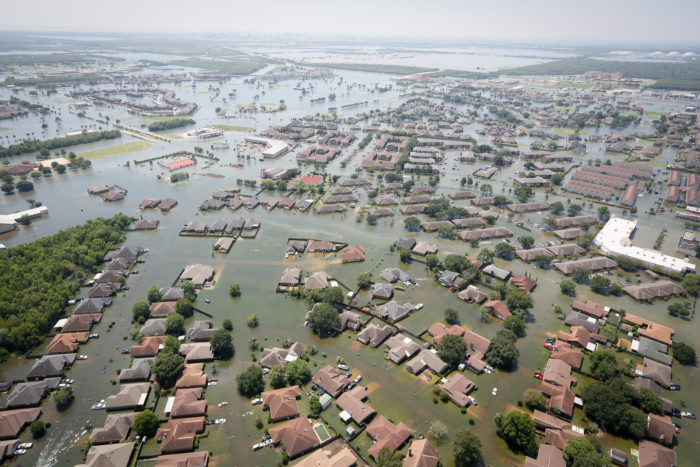
Since hurricanes are getting stronger and wetter, more rain and surge on top of more densely developed coastlines (concrete replacing dirt) and poor civil infrastructure is a recipe for the kind of flooding witnessed in Houston.
Tornadoes in hurricanes
According to NOAA, almost every hurricane that hits land creates at least one tornado. But their location is mostly predictable. Since all hurricanes in the Northern Hemisphere rotate counterclockwise, most tornadoes develop in the top right quadrant of a hurricane, about 50-200 miles north east from the eye in the “dirty” trailing edge.
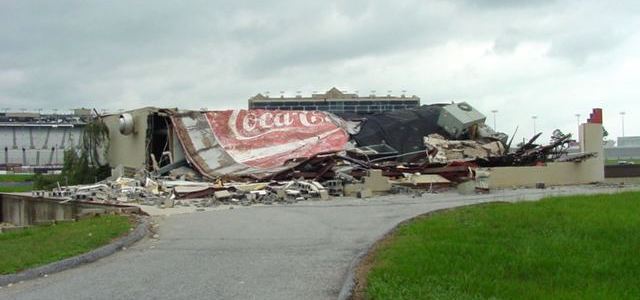
Grid failure or destruction
That means no electricity, water, gas, sewer, internet, TV, or phone.
Over one million Americans had to go without clean drinking water and electricity for at least a week after the 2017 storms.
Eighty to 90% of the electrical grid and communications grid went down as Maria destroyed Puerto Rico. Things were so bad that people were drinking water from EPA-designated hazardous waste sites.
We connected with prepper Angel David Guasch, an air conditioning technician from Juncos, Puerto Rico, near the island’s fifth-largest city, Caguas. He told The Prepared most people had less than a week’s worth of prep.
“People are kind of prepared, but when the usual 3-4 days pass, everyone without proper, long-term preparations knew it was going to be a long time for the government to reach them,” said Guasch.
None of his neighbors had power two months after the storm. “There are working brigades that came from the US, but I’ll say it will be at least six months more until most have a stabilized electrical supply.”
Emergency services will be overloaded
You simply cannot depend on someone else to save you. FEMA says: “You are your own first responder.”
Even if you set aside politics, bureaucracy, and general human flaws, these groups — 911, police, fire, animal control, hospitals, ambulances, medics, and shelters — are not designed, staffed, or funded to suddenly handle millions of needy people. Even the National Guard, FEMA, and Red Cross are limited in what they can quickly do.
Great on-the-ground video in the immediate Harvey aftermath:
Once the weather gets gnarly, first responders need to hunker down, too. During Hurricane Irma, crews in Miami didn’t go out beyond 39 mph winds, which lasted for much longer than just the core part of the storm. As the eye passed over town, some responders ran outside for 10-15 minutes to help who they could, but that’s barely scratching the surface.
You’re probably familiar with the distinct criticisms against the government after Katrina, Sandy, and Maria. There’s even a special Wikipedia page about Katrina criticisms, and a Congressional report concluded:
“The failure of local, state, and federal governments to respond more effectively to Katrina — which had been predicted in theory for many years, and forecast with startling accuracy for five days — demonstrates that whatever improvements have been made to our capacity to respond to natural or man-made disasters, four and half years after 9/11, we are still not fully prepared. Local first responders were largely overwhelmed and unable to perform their duties, and the National Response Plan did not adequately provide a way for federal assets to quickly supplement or, if necessary, supplant first responders.”
This is why Community Emergency Response Teams (CERT) exist. They help the overloaded professionals focus on bigger tasks, while CERT handles things like checking neighborhoods for survivors or running evacuation shelters. Many preppers love to take the free CERT classes to learn skills and meet other local preppers, and some actively volunteer.
Disease
The combo of flood waters, broken fresh water and sewage grids, lack of emergency services, and displaced people and animals creates a perfect incubator for widespread illness.
Put simply: things get real gross, real fast.
Water brings contamination or bacteria up out of the sewers and industrial facilities. People and animals relieve themselves wherever they can. Standing flood water and heat breed mosquitos, multiplying the problem. It’s not just poop, either: mouse urine is a common culprit.
Fatal diarrhea, vomiting, fever, pink eye, scabies, e. coli, cholera, dengue, hepatitis A, giardia, and nasty bacteria like campylobacter and leptospirosis are common illnesses after a hurricane.
Rachel Noble, professor of marine biology at the University of North Carolina-Chapel Hill, told The Prepared there are two main concerns with floodwater. The first are chemicals and microbiological contaminants (like viruses and bacteria) that come from leaking wastewater systems. Second are organisms that proliferate in floodwaters, such as pathogenic Vibrio bacteria, which can cause nasty wound infections.
About 8,500 people died from a cholera outbreak after the 2010 Haiti earthquake, which created similar conditions. Rates of West Nile virus doubled after Hurricane Katrina.
Former US Foreign Disaster Assistance Chief, Jeremy Konyndyk, gave a chilling tweetstorm during the Maria recovery effort:
This all is the sort of hypothetical humanitarian scenario I teach about…never thought I’d see it on US soil. /end
— Jeremy Konyndyk (@JeremyKonyndyk) October 17, 2017
Property damage and disruption to normal life
Needless to say, all of the above elements can destroy a community. Hundreds of billions of dollars of homes, cars, and infrastructure can vanish, let alone the deaths, injuries, and severe disruption to your life and work.
Civil unrest and looting do happen, although sometimes not as much as internet forums would lead you to believe. However, there are reports of people impersonating insurance adjusters to extort unsuspecting homeowners for quick cash.
Roads, schools, traffic lights, gas stations, jobs — all can be disrupted for days or months. As the storms and their effects get worse, it takes longer to get back to normal afterwards.
Foundation for any situation
One of the Sane Prepper Rules is that you can’t predict what is going to happen. Which means a good emergency prep covers a wide range of needs, and our beginner prepper 101 checklist is meant to cover the 80-20 of almost any situation you’ll encounter — hurricanes included.
With the basics outlined in that checklist, you’ll be able to:
- Survive in your home for at least two weeks without outside help or the grid.
- Leave your home at a moment’s notice and be able to survive or make it to professional help.
- Get home or survive wherever you are, in case disaster strikes while you’re away from home.
The rest of this guide assumes you’ve got these extremely important basics.
Hurricane preparedness kit checklist
Even though our basic checklist covers all the bases, if you’re in a hurricane zone, you can buy some extra or slightly different gear specific to the kinds of risks during these storms. Based on research from the Red Cross, FEMA, and Florida Department of Health, consider:
Store more water: In hot, humid climates along the Gulf Coast, consider adding more than the standard one gallon per person per day recommendation. We spent 32 hours reviewing the best emergency water containers and recommend these:
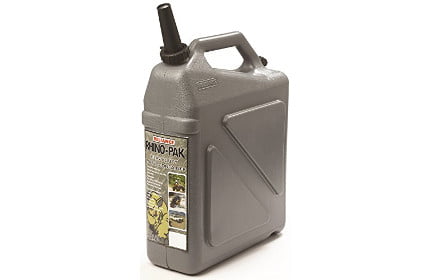
Best for most people:
Reliance Rhino 5.5 Gal Water Container
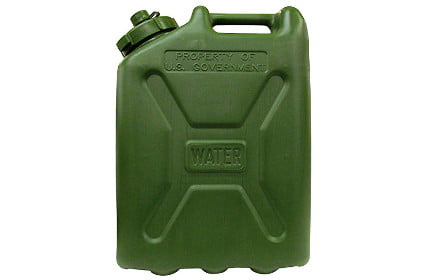
Best overall:
Scepter 5 Gal Military Water Can
Waterproof bags or dry sacks: These increasingly-popular bags are great for storing all kinds of small items in an easy to use waterproof sack. A well-reviewed variety 3-pack is just $10 on Amazon.
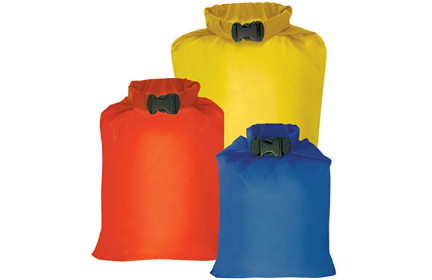
Outdoor Products Dry Sack Pack
Rain covers for your bug out bags: Backpack rain covers are great add-ons. They’re small, light, cheap, and do a great job keeping water out of your bag no matter which direction the rain is coming from. They slide around your bag with an elastic drawstring to close it off.
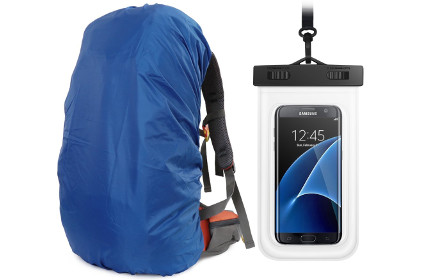
Orange Sport Ultralight Backpack Rain Cover + Phone Case
Large contractor garbage bags: Although not as durable as proper bags, contractor-grade trash bags do come in handy in a pinch. You can store valuables, wrap around your bug out bag, clean up debris, and even use them for sanitation or water collection.
Tarps: Tarps are already part of any good basic prep because they’re so handy, versatile, and have a great cost/weight/volume to value ratio. But we recommend having another one or two larger tarps around the house. They can cover holes in your siding or roof, redirect flood water, provide shelter from the hot sun, create little boats to carry supplies down a flooded street, and so on.
Rain gear: Wind and water! Although most good prepper clothing is already “technical” and good for the outdoors, consider jackets, shirts, pants, socks, and underwear that are water resistant.
You might not have bought a jacket for your basic prep supplies since you live in a warm climate, but consider buying a lightweight waterproof windbreaker.
Don’t forget a large-brim hat to protect your head and neck. We like boonie hats with strings.
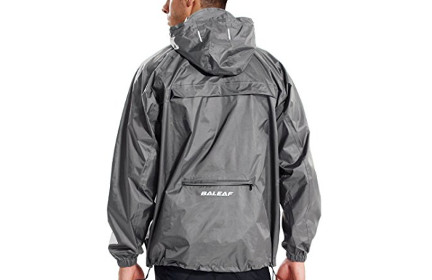
Baleaf Unisex Packable Waterproof Rain Jacket

Outdoor Research Sombrero Hat
Waders or waterproof boots: Walking through flood water is a lot easier (and healthier) with the right gear. You can find good waders for around $40, including boots.
Chainsaw: Buy a gas-powered saw, because you can’t depend on having electricity or being near a plug. You can get a well-reviewed chainsaw for as little as $150 on Amazon.
Storing hurricane supplies
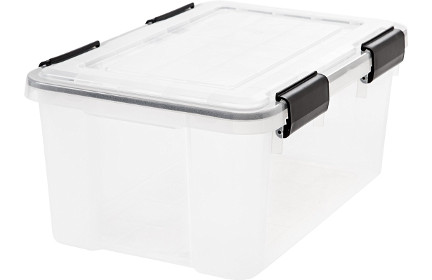
IRIS Weathertight Clear Storage Box
Organize and store your supplies with floodwater in mind. Keep things off the ground and away from windows. Dry, dark spots with relatively consistent temperatures are the best.
Try to find a balance between protected and accessible. Supplies do you no good if they’re buried in the attic and hard to reach, nor if they are on your back porch and soaked by rain. Your bug out bag should be easy to grab and go with very little notice.
How to prepare your home for hurricanes
Document
We strongly recommend that you make an annual preparedness review part of your routine. Beyond replacing expired items, the biggest value is that it reminds you what you have, where it is, how it works, and so on. Your brain is fuzzy in a crisis, so the reminders really help.
It’s also a good time to document your possessions. If they’re destroyed, having documentation makes the process of insurance claims, police reports, and government relief programs much simpler, faster, and more likely to succeed.
If you’re in a hurricane zone, try doing your annual review in the late spring or early summer, just before the season starts.
Tie down your roof, deck, and dock
Take the time to inspect it, looking for loose shingles or panels that strong winds can catch.
A “continuous load path” is a construction term for all of the pieces of a house being tied together, tip to toe. The roof is secured to the walls, which are secured to the foundation.
Although most modern building codes require that major pieces of a home are chained together, sometimes they’re ignored or overlooked.
To keep the roof from blowing away, consider retrofitting the connection between the roof and wall struts with metal straps, like those made by Simpson Strong-Tie.
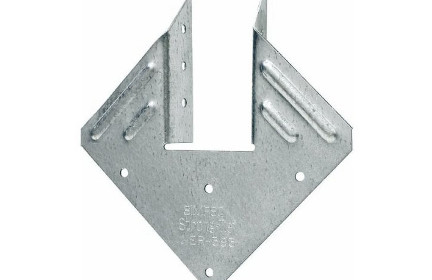
Simpson Strong Tie Hurricane Tie
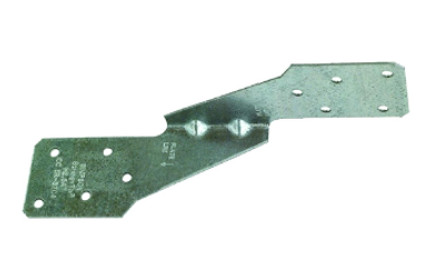
Simpson Strong Tie H2.5A Hurricane Tie
The same theory and equipment applies to sheds, patios, and docks. It’s relatively cheap and easy to add braces to those structures. A few hours of work and $100 can prevent a ton of destruction later.
Gutters and water flow
Clear gutters and drains so they pull water away from your house. Secure loose gutters, downspouts, vents, or other exterior features so they don’t blow away.
Consider if there are things or parts of your landscaping that funnel water towards your house, or prevent water from running away from it.
Yard
Trim shrubs and trees so they can better withstand storms, and to prevent falling limbs from damaging your home.
Replace gravel in your landscaping with bark, because if it’s going to turn into wind-driven shrapnel, soft wood is better than hard rock.
Home and garage doors
Normal doors should have three hinges and a deadbolt lock with at least 1-inch throw length.
For double doors (like French doors), add top and bottom bolts to the inactive door. This will keep wind from exploding the doors open. Make sure the bolts connect through the door header and through the threshold into the subfloor.
Typically the largest opening to your home, garage doors can be sucked out, blown it, twisted off their tracks, or buckle from wind-blown debris impacts. You can replace your whole door with a wind- and impact-rated one, which costs anywhere from $1,500 to $4,000.
An easy, cheaper option is installing vertical bracing to a garage door. Kits cost about $160.
Hurricane window shutters
If you live along the coast in a hurricane zone, it’s probably worth it to add proper window shutters that are at least partially permanent. There’s a good chance that you make money with an increase in home value that’s larger than the money you spent on installing them.
Common types of hurricane window shutters:
- Metal storm panel shutters. $75 per window. Cheap, yet more effective than plywood.
- Accordion shutters. $200 / window. Pull from the side to cover window.
- Colonial shutters. $240 / window. Pull from the side to cover window.
- Bahama shutters. $240 / window. One piece on a hinge above window.
- Roll-down shutters. $420 / window. Fantastic option, but expensive.
- Plywood. $30 / window. Cheapest but worst option. Just screw boards over windows.
Costs are based on a standard 48 x 30 inch window, or roughly 10 square feet.
Metal storm panel shutters
Wavy, sturdy metal that’s the cheapest proper option. You install brackets at the top and bottom of the window frame. When a storm is coming, the metal panels screw into those brackets in a matter of minutes. Storm’s over, take the panels down, and they store nicely in an attic or garage.
Covering a normal window will cost around $75, or $7 to $8 per square foot.
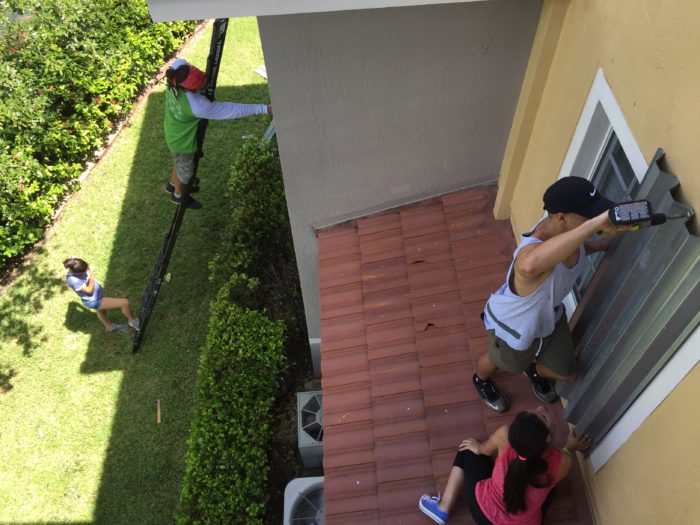
Accordion hurricane shutters
These permanent shutters collapse against one or both sides of a window. You either pull the shutter out from each side and clasp them together in the middle, or from one side all the way to the other side.
$200 per standard window, or $15 to $25 per square foot.
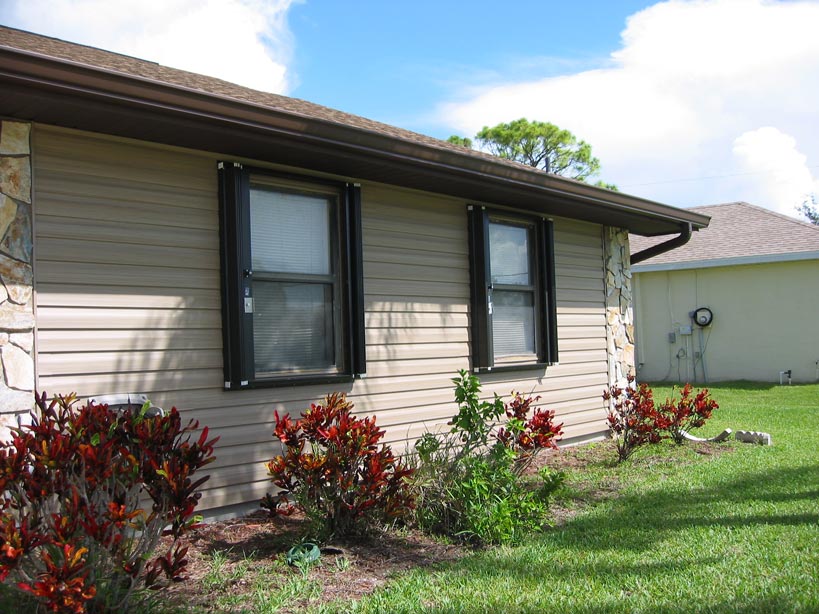
Colonial hurricane shutters
These aesthetically pleasing shutters are permanently attached on the sides, but fold over the window like a traditional window dressing. Which is why they’re called Colonials. They aren’t the most protective, but strike a good balance between function and style.
$240 per standard window, or $18 to $30 per square foot.
Bahama hurricane shutters
One slated piece that is permanently attached on a hinge above the window. Can be propped open to let in more light and air. $240 for a standard window, or $18 to $30 per square foot.
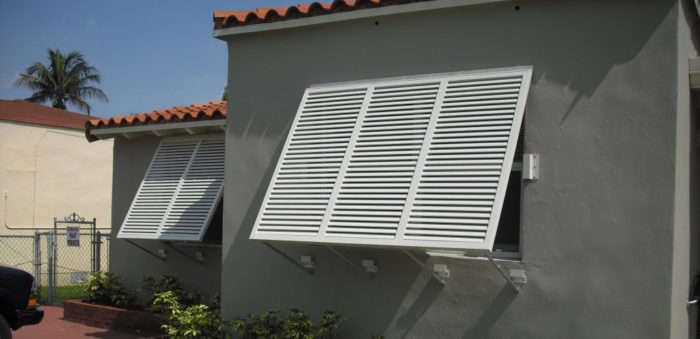
Roll-down hurricane shutters
The best, but most expensive option. A box is attached above the window with the rolled-up panel inside. Either by hand or by pushing a button, the panel rolls down on a track attached to the sides of the window or door. The strongest defense against wind and theft.
$420 per standard window, or $30 to $55 per square foot.
Plywood hurricane shutters
Often shown on the news in the scramble to prepare at the last minute, plywood is the cheapest but least preferable way to protect your home.
Plywood flying off the shelves @WFLA Customers grabbing wood today, prepping for Hurricane Irma pic.twitter.com/Yne79OVBHz
— Jamel Lanee’ (@WFLAJamel) September 5, 2017
Matt Michaels, a spokesman for Lowe’s Home Improvement, said ½-inch is generally the go-to thickness for plywood shutters. But customers will buy anything at the last minute: hardwood plywood, oriented strand board, or concrete siding panels.
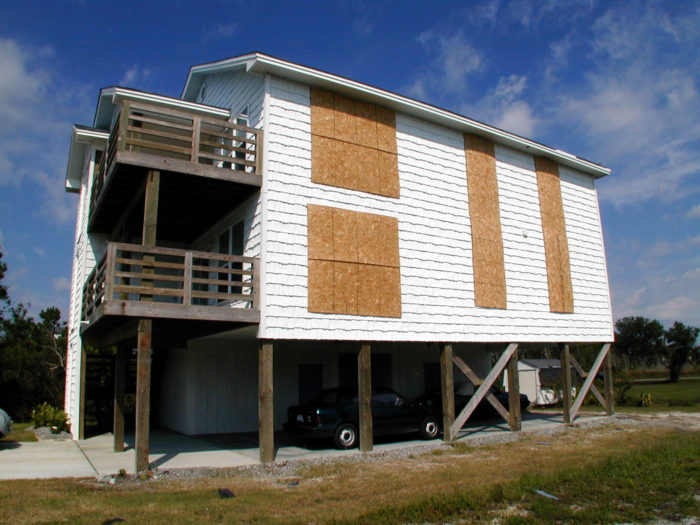
We recommend ½-inch or ⅝-inch CDX-grade exterior plywood. Don’t use particle board or compressed wood (like in the video below) because it’s just not strong enough.
It costs about $30 for a standard window, or $1 to $5 per square foot. Don’t forget the cost of hardware like screws, lag bolts, and washers.
You can certainly drill it directly into the window frame, or use hanger bolts for concrete homes.
Another product, Plylox, which we haven’t tested but appears to have great reviews, are clips that fasten plywood to window frames without drilling into your house.
Hurricane insurance
There’s no turnkey “hurricane insurance” product, and insuring against the various types of hurricane-driven elements can be complex. The right answer is usually a mix of policies, like homeowners, flood, and vehicle comprehensive insurance.
Talk with your agent. Insurance is messy and varies too much by state and circumstance.
Homeowners insurance
Ensure your homeowners policy has loss-of-use coverage, which will help pay for lodging if your house becomes uninhabitable.
Most homeowners policies will cover wind or rain damage. If you’re in a particularly risky spot, sometimes homeowners policies won’t cover wind damage and you need to buy a separate “windstorm” policy.
In normal life, many homeowners policies have a flat-rate deductible that functions just like any typical annual insurance deductible. It accumulates over multiple issues spread throughout the year.
However, since insurance companies know one storm can suddenly destroy $100B of property, they’ve created special “hurricane deductibles” that are separate from your normal deductible.
From the insurance company’s perspective, any damage caused by wind or wind-driven rain after certain “triggers” is considered special. Triggers could be a time window, like the time between an official hurricane watch/warning through 72 hours after the storm, or it could be above certain wind speeds.
Hurricane deductibles typically vary from 1-5% of a home’s insured value, according to the Insurance Information Institute.
For example, your $500,000 home might normally have a flat $5,000 deductible. But wind damage during a hurricane might not be covered until you pay the first $25,000 yourself. And it ignores any deductible you built up the rest of the year.
Nineteen states allow policies with hurricane deductibles:
- Alabama
- Connecticut
- Delaware
- Florida
- Georgia
- Hawaii
- Louisiana
- Maine
- Maryland
- Massachusetts
- Mississippi
- New Jersey
- New York
- North Carolina
- Pennsylvania
- Rhode Island
- South Carolina
- Texas
- Virginia
- Washington D.C.
Bonus for Floridians: state law says a hurricane deductible can only be applied once each hurricane season, so you won’t be punished for multiple storms.
Flood insurance
Homeowner’s policies almost never include flood coverage, which means floods or storm surges from hurricanes are excluded.
There can be minor exceptions. For example, homeowners policies usually do cover wind damage, so if wind blows your roof off and that allows rain to flood inside, it might be covered.
Flood insurance is a completely separate product. It’s so unprofitable for insurance companies, Congress created the National Flood Insurance Program (NFIP) in 1968 to create federally backed policies.
You can buy an eligible NFIP plan if you live in a floodplain area, as determined by FEMA. It typically takes 30 days for flood plans to kick in, so don’t wait on this.
If you live in a high-risk flood area and have a federally-backed mortgage, you probably already have an NFIP plan. By law, they are required to protect home loans made by the government in risky areas.
Mobile home hurricane coverage
Mobile and manufactured homes can make up as much as 40% of all homes in Florida, yet half are completely uninsured and the majority are older models not capable of handling severe wind. To make matters worse, local building codes typically don’t apply since it’s technically a vehicle.
They are more vulnerable to wind damage because they’re lighter and sometimes unsecured. In 1992, Hurricane Andrew destroyed 90% of all manufactured or mobile homes along the south Florida coast.
Mobile homes can get NFIP flood coverage if they’re secured to a foundation, according to the III. It’s also a good idea to put skirting around the foundation, to block wind from getting under the foundation, in addition to tie downs or straps.
Car insurance
If you’re in a high-risk zone and worry about car damage, we highly recommend ponying up for “comprehensive” coverage. Comprehensive covers flooding, downed limbs, wind damage — basically anything besides collisions.
Auto insurers will usually block you from buying comprehensive coverage if you’re in an active storm’s path, so don’t wait.
There is no standard rule of thumb for how much more you’ll pay for comprehensive coverage on top of collision. Everyone’s car, location, deductible, and driving history are different.
To give you an idea, we used NerdWallet’s quote calculator. We based this example on a 32-year-old married woman who owns a 2015 Honda Accord sedan, living in area code 33445 (Delray Beach, Florida). For minimum liability insurance (enough to be legal), premiums range from $55-$80 per month, or $700-$1,000 per year. For extended coverage with a $500 deductible, premiums are about $144-$170, or $1,700-$2,040 per year.
Financial incentives for hurricane prepping
Even if you ignore the value of protecting your loved ones, home, and community, there can be long term (spend $100 to save $10,000 later) and even short term financial incentives.
Incentives vary by state. In some South Carolina counties, for example, the Safe Home program is a big incentive that can halve the cost of a new roof when insurance discounts and tax breaks are factored in. It encourages folks to make their homes more hurricane resistant.
Some states have “tax holidays,” where they don’t charge state and local sales taxes on items related to hurricane prep at the beginning of the season. Florida did this for three days in June 2017 to encourage folks to prepare. So keep an eye on your local news around that time.
You can claim a casualty loss deduction on your federal return for disasters, but not for preparations.
There are no tax incentives for hurricane retrofits at the federal level. However, in the aftermath of a hurricane, there is FEMA aid if the president declares a federal disaster. And there is often tax relief: the IRS has extended filing deadlines for states affected by hurricanes in the past, including Katrina, Ike, and the recent Harvey, Irma, and Maria.
Earlier this year, FEMA proposed it could incentivize states by reimbursing them for replacing or upgrading infrastructure and tightening up building codes. This would lower recovery costs nationally.
What to do after the hurricane
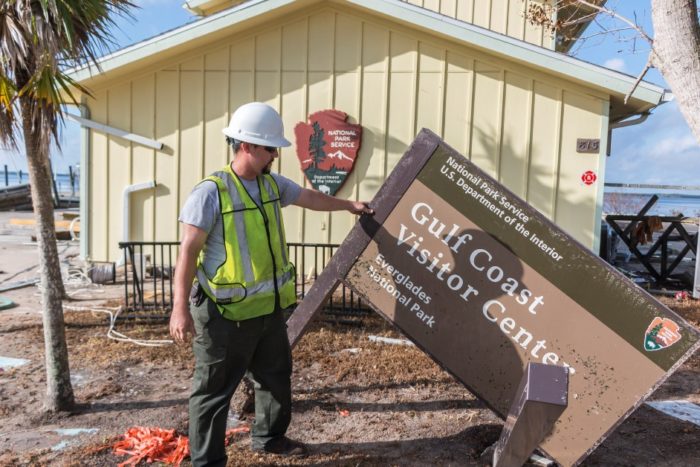
If you’ve evacuated, wait for the official green light to return home.
A sad number of preventable deaths occur when people drive through flood waters. So much so, emergency managers even have one of those catchy sayings: “Turn around, don’t drown.” It only takes 6 inches of moving water to sweep an adult off their feet. It only takes 12 inches to sweep away a car. If you must be macho, try to avoid moving water that reaches your tire’s wheel / rim.
Don’t try to use flood water for drinking or sanitation — even if you filter it. Filters handle particulates and organics, not chemicals like gasoline, pesticide or salt water. Use a filter on collected rainwater instead.
Mark yourself as safe on Facebook’s Safety Check.
Try creating a new outgoing message on your phone’s voicemail. That way if people are calling you but can’t get through, they’ll at least hear that you’re OK and what your plans are.
Texting proved to be the most reliable communication in recent hurricanes, because texts are more likely than calls to squeeze through a clogged network.
If the situation is particularly dire, as we saw in Puerto Rico after Hurricane Maria, many preppers rely on Ham radio in an emergency to communicate with other people and get official updates.
Insurance is the name of the game. When it’s safe to, photograph and document all damage. File a claim ASAP. Demand for insurance adjusters spikes after disasters, and they answer on first-come, first-serve basis. Be patient with getting an inspection and assessment. Verify the adjuster when they arrive because scam artists emerge from the woodwork after disasters.
It can be tempting to start fixing things. Don’t. Only tend to urgent repairs that will prevent further damage, such as covering up windows or roof damage with a tarp to keep rain out.
If your home is uninhabitable, use your homeowners loss-of-use policy to pay for a hotel or other lodging until you can go home.
Anecdotes of post-Katrina lawlessness, violence, and unpredictable behavior marred the recovery in New Orleans. Know who you can trust. Determine if your neighbors are around and check in on them. Not only can you share information and assist each other, but you are each other’s eyes if looters or suspect characters make appearances.
